I have county level data recording the year an invasive insect pest was first detected in that county between 2002 and 2018. I created a map using ggplot2 and the maps package that fills the county polygons with a color according to the year the pest was detected. 
**Is there a way to use the gganimate package to animate this map with the first frame filling in only polygons with a detection date of 2002, the second frame filling polygons with a detection date of 2003 or earlier (so 2002 and 2003), a third frame for detection dates of 2004 or earlier (2002, 2003, 2004), etc.? ** Clarification: I'd like it so all the county polygons are always visible and filled in with white initially and each frame of the animation adds fills in counties based on the year of detection.
I've tried using the transition_reveal(data$detect_year) with the static plot but get an error that "along data must either be integer, numeric, POSIXct, Date, difftime, orhms".
Here's some code for a reproducible example:
library(dplyr)
library(purrr)
library(maps)
library(ggplot2)
library(gganimate)
# Reproducible example
set.seed(42)
map_df <- map_data("county") %>%
filter(region == "minnesota")
map_df$detection_year <- NA
# Add random detection year to each county
years <- 2002:2006
map_list <- split(map_df, f = map_df$subregion)
map_list <- map(map_list, function(.x) {
.x$detection_years <- mutate(.x, detection_years = sample(years, 1))
})
# collapse list back to data frame
map_df <- bind_rows(map_list)
map_df$detection_years <- as.factor(map_df$detection_years)
# Make plot
static_plot <- ggplot(map_df,
aes(x = long,
y = lat,
group = group)) +
geom_polygon(data = map_df, color = "black", aes(fill = detection_years)) +
scale_fill_manual(values = terrain.colors(n = length(unique(map_df$detection_years))),
name = "Year EAB First Detected") +
theme_void() +
coord_fixed(1.3)
animate_plot <- static_plot +
transition_reveal(detection_years)
If it's possible to do this with gganimate, I'd like to but I'm also open to other solutions if anyone has ideas.

